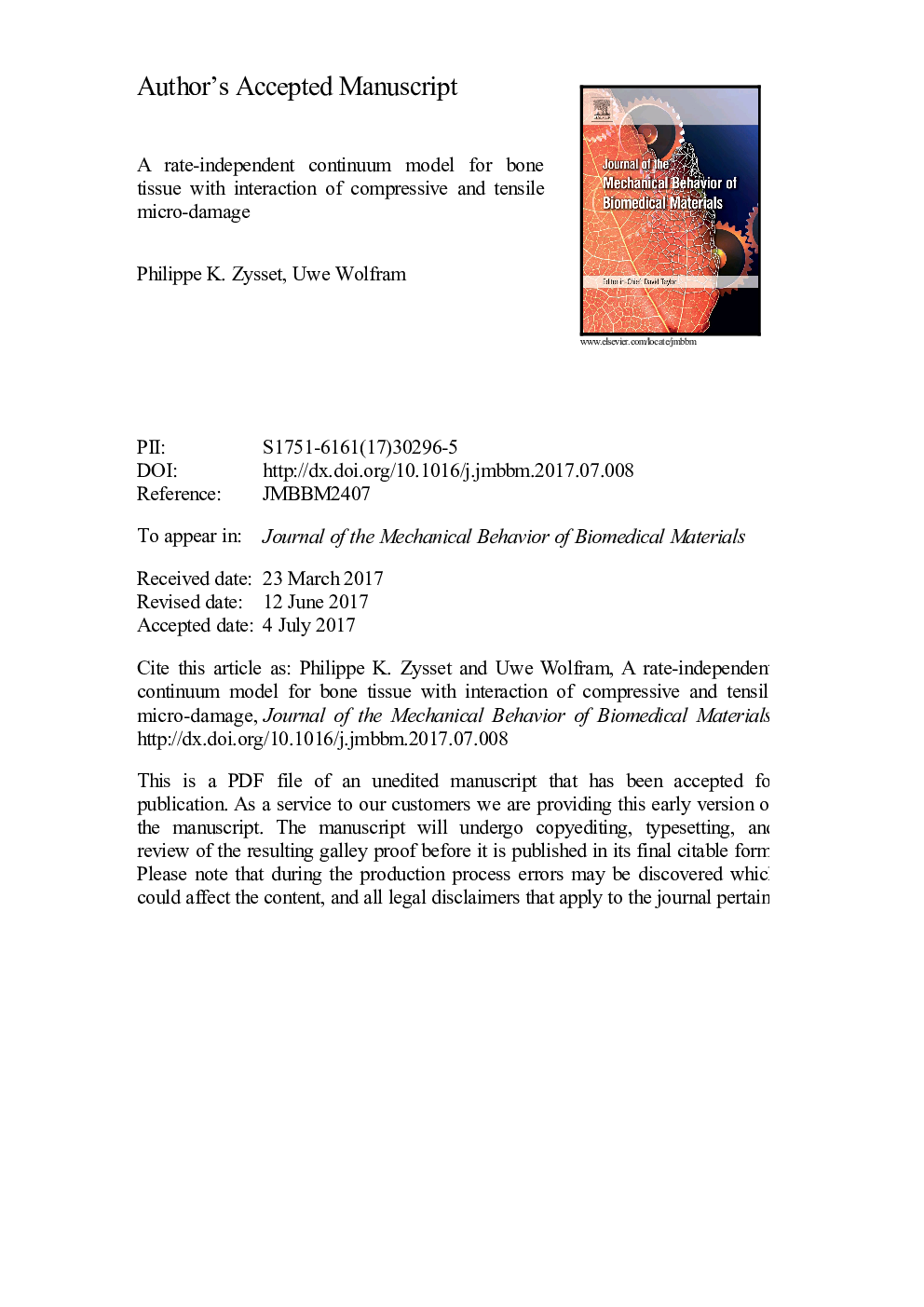| Article ID | Journal | Published Year | Pages | File Type |
|---|---|---|---|---|
| 5020437 | Journal of the Mechanical Behavior of Biomedical Materials | 2017 | 49 Pages |
Abstract
Low bone strength is a major risk factor for osteoporotic fractures and is only partially determined by clinical densitometry. Accumulated micro-damage induces residual strains, degrades elastic modulus and reduces bone strength independently of bone mineral density. Histologically, overloading of bone in compression and tension leads to distinct crack size, distribution and orientation which interact during combined loading scenarios. Statistics of rheological models can describe this process and reproduce experimental stress-strain curves with an unprecedented realism, but are computationally expensive and therefore difficult to generalize to 3D. Accordingly, the aim of this work is to formulate a continuum damage model that describes the key features of bone micro-damage, namely the accumulation of residual strains, the degradation of elastic modulus and the reduction of strength in compression, tension and especially in their sequential application. The promising qualitative agreement of the model with the experiments will motivate a generalization to 3D and allow the biomechanical investigation of bones and bone-implant systems subjected to cyclic overloading in tension and/or compression.
Related Topics
Physical Sciences and Engineering
Engineering
Biomedical Engineering
Authors
Philippe K. Zysset, Uwe Wolfram,
